Auto Carriers
|
1904
- present |
Country: |
 |
|
AC Cars has always been known as a very individualist manufacturer of very individualist cars, arguably the most notable being the 7-litre Ford V8-engined Model 428 in convertible and fast back forms, styled by Pietro Frua of Italy. The 428 was an expensive, luxury-type car of essentially limited production.
However, AC fortunes were founded on an infinitely more mundane vehicle sold in quantity over 100 years ago. The marque's origins go back almost to the beginning of the 20th century, the joint founders being John Weller, talented engineer and designer, and John Portwine, a butcher, who financed him and handled the business side.
Weller's first car was the 20 hp four-cylinder Weller, built at West Norwood, London, in 1903. It was of advanced design, making considerable use of aluminium to keep weight down. But the project never got under way owing to production and cost problems, and on Portwine's suggestion a cheap, reliable three-wheeled commercial vehicle was designed and put into production instead.
This was called the Auto-Carrier which, right from its introduction in 631cc, single-cylinder-engined form in 1905, proved a considerable success. It had tiller
steering and chain drive from the engine to the single rear wheel, which contained a Roe pattern epicyclic two-speed gear and clutch incorporated in the hub. A large number of London and provincial firms found Auto-Carriers far more efficient than horse-drawn carts, which were the common form of transport at the time, and orders flowed in.
To build them in quantity a new company named Autocars & Accessories Limited was formed, and with production under way Weller's next step was to develop passenger-carrying versions of the original design. On the first of these the driver kept his seat in front of the rear wheel, with one or more passengers seated ahead of him in a forecar.
On later types the driver and passengers sat side-by-side in the forecar, tiller
steering being retained. Late in 1907 Weller and Portwine reformed their business again as Auto-Carriers Limited, to build these new
AC 'Sociables' alongside the commercials, all of them costing under £100. The first AC, then, was a three-wheeler, but success made the partners ambitious and, following removal in 1911 from West Norwood to a new factory in the pleasant riverside village of Thames Ditton, Surrey, John Weller got down to designing a four-wheeled car.
At first he tried fitting a two-wheeled rear axle to the Sociable, but the resultant cyclecar did not please him, so instead he laid down a new design.
It was a true small car, unusual in having its three-speed gearbox integral with the rear axle, and incorporating a disc transmission brake at the back on the end of the propellor shaft - these becoming distinctive AC features for the next 16 years. Its engine was a Fivet, a neat French 1094 cc side-valve four-cylinder unit. Suspension was by transverse leaf spring at the front and quarter-elliptics at the rear, and by use of much aluminium the whole car in open two-seater form weighed only 10 cwt and could attain 45 mph.
John Weller's Masterpiece, the AC 'Light Six' Engine
As announced in 1913, this first AC four-wheeler was notably pretty, with elegant curved wings, rounded-vee radiator, and a choice of wire or artillery wheels. It performed well and reliably, and, after the upheavals of World War 1, was continued in improved form. Supply of the Fivet engine became difficult, however, so AC employed the lively 1.5-litre, 69mm x 100 mm, Anzani four-cylinder side-valve unit instead, giving even better performance. Meanwhile, production of the tricars was dropped and John Weller produced his masterpiece, the AC 'Light Six' engine. First shown in 1919, and initially offered in 56mm x 10 mm 1.5-litre and 65 mm x 100 mm 2-litre forms, this was in full production as a 2-litre by 1921; it was a remarkably advanced and efficient power unit, giving about 40 bhp and having a single overhead-camshaft driven at first by a vertical shaft and helical gears.
Noise and manufacturing costs caused Weller to quickly to replace this by an endless inverted-tooth chain, controlled by what became known as the Weller spring-loaded tensioner, the patents for which were to earn the inventor some sizeable royalty fees. The engine also had wet cylinder liners in an aluminium block, and an aluminium sump, iron head and aluminium cam-cover, the whole being extremely attractive in appearance. The old engineering maxim 'If it looks right, it
is right' certainly applied to the six-cylinder AC engine, which set records for longevity, basically the same unit being employed until 1963 - a span of over 40 years during which power output rose almost threefold to over 100 bhp.
The year 1921 brought big company changes, when the dynamic S. F. Edge, who had steered the Napier marque to fortune before World War 1, became a director. The following year he became Chairman and Governing Director, and the co-founders Weller and Portwine both resigned from their company, which changed its name to AC Cars Limited. Edge swiftly launched a racing and record-breaking programme, with four-cylinder 1.5-litre and six-cylinder 2-litre cars. The 1.5-litre cars, variously powered by side-valve Anzani, and overhead-camshaft eight and 16-valve engines evolved by Weller, set many highly impressive short and long-distancerecords at
Brooklands, including several at over 100 mph, between 1921 and 1932.
The bigger sixes also figured prominently, one creating a new world 24-hour record in 1925 at Montlhery, France, averaging 82.58 mph. In December 1927, the Hon. Victor Bruce and Mrs Bruce broke the world 15,000-mile record at 68.01 mph, plus six other long-distance figures, despite appalling wintry weather and the loss of over 15 hours for repairs after the car overturned following a skid in the snow. It was the Hon. Victor Bruce, too, who scored the first British victory in the famous Monte Carlo Rally in 1926, sharing a 2-Iitre six with W. J. Brunei!.
 The first AC model was, naturally enough, the Auto Carrier. The image above is from a 1903 version, used as a delivery vehicle. The driver would steer from the rear courtesy of a 'tiller', it being driven by a 20hp engine driving a single rear wheel via a chain.
The first AC model was, naturally enough, the Auto Carrier. The image above is from a 1903 version, used as a delivery vehicle. The driver would steer from the rear courtesy of a 'tiller', it being driven by a 20hp engine driving a single rear wheel via a chain.
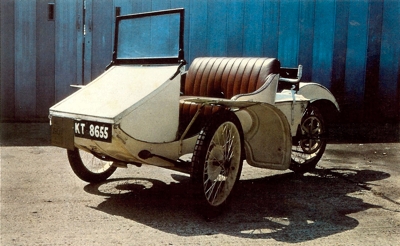 The image above is of one of the very first passenger carrying AC's, directly converted from the original Auto Carrier. The firsr versions had the driver sitting behind the passengers, but this 1910 'Sociable' version had the driver sitting next to the passengers. The image above is of one of the very first passenger carrying AC's, directly converted from the original Auto Carrier. The firsr versions had the driver sitting behind the passengers, but this 1910 'Sociable' version had the driver sitting next to the passengers.
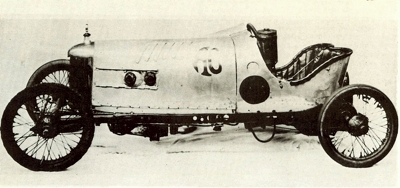 Now with 4 wheels, the 1921 AC Sprint would set many records at Brooklands.
Now with 4 wheels, the 1921 AC Sprint would set many records at Brooklands.
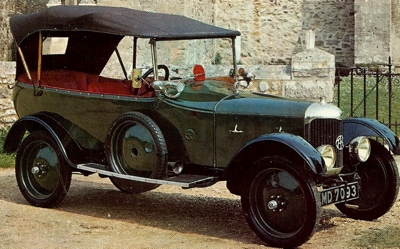 By 1921 AC were not only building racing cars, but accomplished passenger four-seaters such as this 11.9.
By 1921 AC were not only building racing cars, but accomplished passenger four-seaters such as this 11.9.
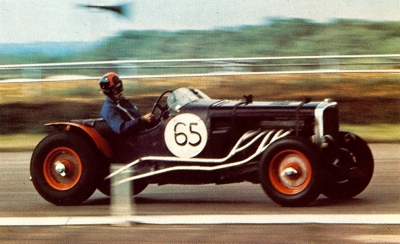 We uncovered this strange image of what we believe to be a 1938 AC, obviously highly modified by the looks of the rear wheels.
We uncovered this strange image of what we believe to be a 1938 AC, obviously highly modified by the looks of the rear wheels.
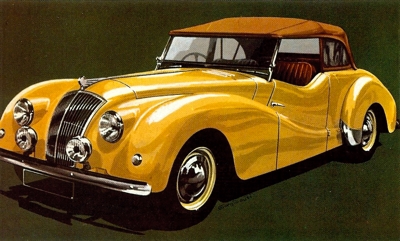 The AC Buckland Sports was an elegant five seater tourer fitted with a sweet 1991cc engine, first shown at the 1952 London Motor Show.
The AC Buckland Sports was an elegant five seater tourer fitted with a sweet 1991cc engine, first shown at the 1952 London Motor Show.
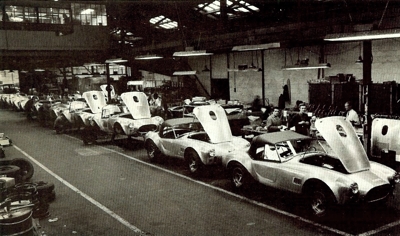 This rare archive image shows the AC Thames Ditton works in full production mode, with Cobra's undergoing various stages of completion.
This rare archive image shows the AC Thames Ditton works in full production mode, with Cobra's undergoing various stages of completion.
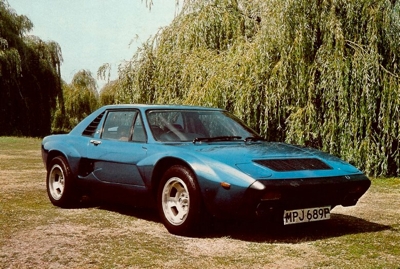 The AC ME300 began with the end of the Unipower story.
The AC ME300 began with the end of the Unipower story.
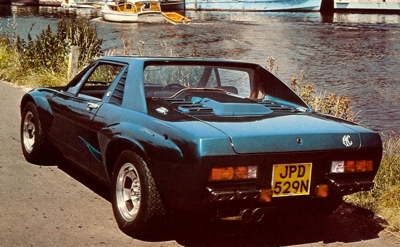
|
AC cars also scored numerous successes at
Brooklands, and in hillclimbs and sprints, while a 1.5-litre car finished third in the I923 '200 Miles' race despite delays through
tyre trouble. Production of the four-cylinder 1.5-litre AC model was dropped after I927 and two years later S. F. Edge decided to retire. The company then went into voluntary liquidation and no cars were built between 1929 and I931. But two engineering brothers, William and Charles Hurlock, acquired AC Cars Limited in 1930 and began a cautious design revision.
First, they replaced the cantilever front springs by semi-elliptic. Their next step was to fit a 4-speed Moss gearbox in unit with the engine in place of the now outdated 3-speed unit on the rear axle. The chassis was now underslung at the rear and the resultant car, called the Ace, was very successful, one winning the 1933 RAC Rally, driven by Kitty Brunell, daughter of the 1926 Monte Carlo co-victor.
AC built their own coachwork at Thames Ditton, and produced a very individual range of bodies, ranging through open, drophead and closed 2-seaters to two and four-door coupes, convertibles and saloons, establishing the AC as one of the most handsome among the 'middleclass' sporting cars of the 1930S. They were lively, refined performers, and 60, 70 or 80 bhp variations of Weller's famous ohc six were optional, while even an Arnott-supercharged version giving close on 90 bhp was offered.
AC Cars Limited was one of the first British makers to export cars to America, sending the first batch over in 1937 and exhibiting at the New York Show. World War 2 diverted AC's activities away from motor cars until 1947, when the first post-war two-door AC saloon was announced. This was very much in the current styling idiom, with deep, valanced 'helmet' type wings merging with a wide bonnet containing an integral
radiator grille and headlights.
Beneath this new shape was the faithful old Weller engine and non-independent semi-elliptic springing, but it now had lengthened springs, new tubular hydraulic shock absorbers and revised braking by Girling, hydraulically operated at the front and mechanically at the rear.
Those were the days of intensive exporting, and the Thames Ditton factory joined in, cars going to many parts of the globe and finding many contented customers. Although heavy, the saloon was lively and comfortable, besides retaining that AC quality and individuality which counted so much.
For 1952 a switch was made to all-hydraulic brake operation and in that same year the Buckland Body Works of Buntingford, Hertfordshire, announced a shapely, open 5-seater tourer version of the model, called the Buckland Sports. This sold well alongside the saloon, both being built until 1957 when they were superseded.
The AC All-Weather Invalid Chair
Two world wars had given the AC Company ample experience in diversification and in the 1950s the company reverted to three-wheeler manufacture, developing the AC all-weather invalid chair to a Ministry of Pensions contract. For a period AC also built a three-wheeled 250cc Villiers-engined mini-car called the Petite.
Remarkably, another venture was to manufacture four special electric trains for the Southend Corporation, to transport holiday passengers on the Southend pier. Yet another AC product was the 'Bag Boy' golf trolley, made under licence from the USA, but in 1953 came a sensational change in AC policy which gladdened the hearts of all sports car enthusiasts - the introduction of an all-new Ace.
The Ace, Barchetta Style
This model, one of the highlights of the 1953 Earls Court Motor Show, was based on the very successful Tojeiro sports-racing car built by John Tojeiro of Cambridge for the racing driver Cliff Davis. The competition Tojeiro was powered by a 2-Iitre Bristol engine, and its body closely followed the Ferrari open two-seater
Barchetta style as used on the original 166 'Inter' model. AC's interpretation had much the same elegant shape, but its engine was John Weller's time-honoured 2-litre aluminium six, in triple SU- carburettored 85 bhp form, driving through a Moss 4-speed
synchromesh gearbox.
For an AC, the chassis was daringly new, being of welded 'ladder' type in 3 in. diameter 16-gauge steel tube, with all-round independent suspension by transverse leaf springs and fabricated tubular wishbones, controlled by Armstrong telescopic hydraulic dampers.
Beautifully clean in shape and with a dry weight of only 15 cwt, this new AC could top the 100 mph mark and was an immediate success.It was followed 12 months later by the even more handsome Aceca coupe, and subsequently AC at last broke away from their own classic six-cylinder engine, and offered the 125 bhp 2-Iitre Bristol six-cylinder unit, giving 118mph, as an alternative.
In 1961 yet another power variant, the 2.6-litre Ford Zephyr six with Ruddspeed modifications and five stages of tune, became optional. Not that the old AC six was pensioned right off; it remained available right up to 1963, still with its original 65 mm x 100 mm bore and stroke and basic 1919 characteristics.
Indeed, the changes wrought upon it during its 44-year career amounted to little more than multiplication of the carburettors from one to three, raised compression ratio and improved breathing, modified water circulation, use of Vandervell-type bearings, and addition of a fifth main bearing and a crankshaft damper.
The Ace-Bristol Two-Seater
Meantime, the Ace-Bristol open two-seater had been successful in racing, making hay in the 2-litre production sports class in the United States, and doing well in British races, where one example won the Three Hours final of the 1956 Autosport Championship, and another won this championship outright in 1957. The cars also ventured to Le Mans for the famous 24-Hours race, being placed 10th in 1957, 8th and 9th in 1958 and 7th in 1959, all of which demonstrated their commendable stamina in the face of much fiercer
prototype sports machines.
These performances undoubtedly played a vital part in the next major AC development, but meanwhile 1959 brought another new production model, the Greyhound (reviving a pre-war name). This was a less attractive car than the Ace or Aceca, but more roomy with a four-seater coupe body on a longer wheelbase. A Bristol 2-litre or 2.2-litre engine was used, together with disc front brakes, and a significant change came in the suspension, which utilised coil springs and double wishbones in place of the former transverse leaves.
The AC Greyhound
The Greyhound was expensive at over £2,800, but 150 were built between 1960 and 1963, when a tempestuous newcomer swept it and all other existing AC models off the production line. The Ace-Bristol's racing feats in the USA drew the eye of a shrewd Texan racing driver,
Carroll
Shelby, co-winner of Le Mans 1959 in an Aston Martin. To Shelby it was obvious that the sturdy Ace chassis could take a lot more power than it was currently using.
The Bristol engine, moreover, was expensive to maintain and the fastest examples tended to be fragile. Shelby envisaged putting an American Ford ohv V8 engine, comparatively little stressed, into the Ace, and in 1962 he visited the Thames Ditton factory to finalise his project.
AC lost no time. A 4.2-litre unit giving about
240 bhp was installed in a chassis, the suspension, transmission and wheels were 'beefed up', disc
brakes were fitted and very quickly the first AC Cobra
prototype was built and sent out to the States. The reaction was sensational and Shelby clamoured for all the Cobras the factory could possibly make. The chassis and bodies were built in Britain, then shippedout to California to have their engines and gearboxes fitted.
subsequently the 270 bhp 4.7-litre engine was fitted. So great was the demand for the Cobra that by early 1963 AC were obliged to drop production of all other models. The design was improved as the production rates grew, the wheels and
tyres grew larger, rack and pinion
steering was adopted and the transverse leaf springing replaced by coil springs and wishbones.
In appearance the Cobra was extremely impressive, the grace of the original Ace
bodywork being enhanced by the massive wheels, extended wheel arches, swelling bonnet and big twin exhausts, to impart a very rugged but superbly balanced shape.
The car travelled as fast as it looked, and inevitably it was raced. Shelby formed a team for the GT class of the 1964 World Sports Car Championship series and his Cobras were placed 1-2-3 in class (4-5-6 overall) in the Sebring r z-Hours race, and first in class, 4th overall, at Le Mans.
In 1965 they scored class victories at Daytona,
Nurburgring and Le Mans, winning the GT Championship outright. Shelby's next step was to persuade a Ford 6997 cc, 425 bhp engine into the car, the variant being called the Cobra 427 after the cylinder displacement in cubic inches. This made a 160mph road car at appreciably less cost than contemporaryFerraris, Maseratis etc, and Cobra demand continued.
From AC's point of view, however, the Cobra operation had become remote from Thames Ditton, which simply became a source of chassis. AC therefore evolved their own 427 model, fitting the 7-litreFord engine in a lengthened Cobra chassis, and getting the Italian coachbuilder Pietro Frua to design and build an elegant two-seater convertible body. Refinement rather than fierce performance divorced the AC 427 from the Cobra image; automatic transmission was employed, and in 1967 a slightly larger, more modern Ford V8 unit of 7016 cc (428 cu. in.) giving 345 bhp was fitted, the model then becoming the 428.
The AC 3000ME
The 1970s were not a good period for luxury car manufacturers and Derek Hurlock went searching for a totally new smaller car. Mid-engined designs were in fashion at the time and in 1972 the Diablo,
prototype with an Austin Maxi engine and transaxle was built by privateers Peter Bohanna and Robin Stables. In much the same way as they had taken up the Tojeiro
prototype and turned it into the Ace, AC acquired the rights and at the 1973 London Motor Show showed their own version, the mid-engined ME3000 with the 3.0-litre Ford Essex V6 engine installed transversely over a bespoke AC-designed gearbox.
Development was virtually complete in 1976 when new Type Approval regulations were introduced. A
prototype failed the 30 mph (48 km/h) crash test, and the chassis had to be redesigned. On the second attempt, the car passed with flying colours. This was a huge achievement for a tiny firm - Vauxhall had to make several attempts before the contemporary Chevette passed. For AC, such delays meant that the first production cars (now renamed 3000ME) were not delivered until 1979, by which time they were in direct competition with the Lotus Esprit. Although comfortable, brisk, nicely built and practical, AC's ambitions of selling 250 cars per year were a distant memory.
After just 71 cars were sold, Hurlock called a halt to production as his health was suffering and the company was struggling in the teeth of a recession. In 1984 production stopped at Thames Ditton and the car and the AC name were licenced to a new company registered as AC (Scotland) plc run by David McDonald in a new factory in Hillington, Glasgow. Here, 30 cars were built, including a development car tested with Alfa Romeo's 2.5-litre V6 engine and a nearly-complete Mark 2
prototype of the same.
Regardless (or possibly because) of these developments, AC Scotland called in the receivers in 1985. After selling the historic High Street works for redevelopment, AC themselves soldiered on as a service operation in the '21st Century' works on Summer Road until the Hurlock family finally sold their holdings in 1986 to William West. After some complex machinations the company was split between property interests and the car brand; the former was renamed and the latter was acquired by Brian Angliss.
Also see: AC Car Reviews |
AC Ace |
AC Cobra |
AC ME3000



